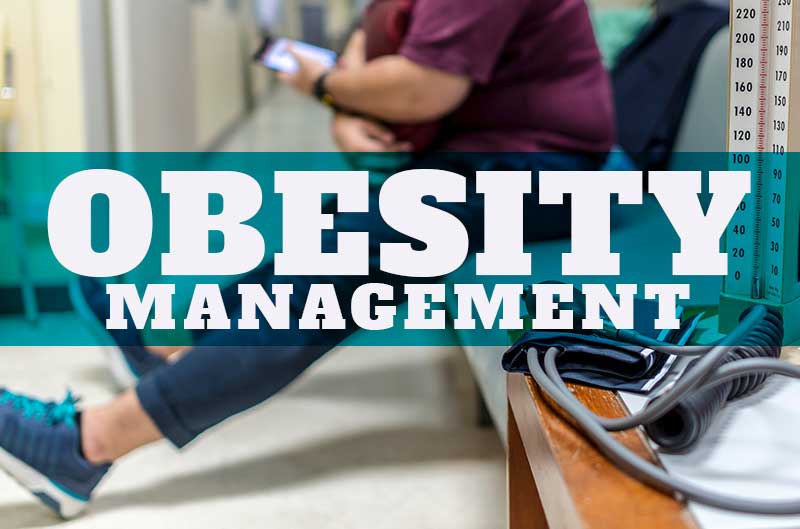Need Help Losing Weight? Try an Obesity Management Doctor
Exercise and NutritionPosted:

“He lacks willpower. She’s lazy. They’re fat because they eat too much and move too little. It’s on them.”
Being obese isn’t a character flaw or a lifestyle choice. Obesity is a complex interplay of biological, psychological, developmental, and environmental factors, according to the Obesity Medicine Association.
That’s why in 2013 the American Medical Association recognized obesity as a medical disease and not a problem of personal responsibility.
The World Health Organization defines obesity as “abnormal or excessive accumulation of body fat that presents a risk to health.”
“Think of it this way,” says Dr. Ram Kafle, a board-certified obesity medicine clinician at Lee Health: “You wouldn’t fault a family member for her heart condition or high blood pressure. A person with obesity deserves the same compassion and consideration.”
Obesity medicine doctors: Who are they?
Obesity medicine clinicians like Dr. Kafle are trained to treat obesity as a disease. (Dr. Kafle’s also board-certified in family medicine).
Because so many different factors contribute to obesity, obesity medicine clinicians develop personalized treatment plans comprised of nutrition, physical activity, behavior therapy, and medication.
Obesity affects an estimated 93 million Americans, a number expected to reach 120 million within the next five years. The rising obesity rates may be linked to an increase in the heart failure deaths in adults 35 to 64 years of age, a new study finds.
The report concerns Dr. Kafle because obesity poses many heart health risks.
“Heart disease kills more American men and women than any other disease,” Dr. Kafle notes. “The report highlights the urgency to address the obesity epidemic, which is associated with so many adverse health conditions. It can lead to poorer mental health outcomes, reduced quality of life, and leads the way for causing death from diabetes, heart disease, stroke, and some types of cancer.”
Education is key
Dr. Kafle says he helps his patients to lose weight by educating them about diet, exercise, lifestyle modifications and, if appropriate, prescribing anti-obesity medications.
“Obesity is a multifactorial disease, meaning it has many causes and contributing factors,” he says. “Factors can include behavior, genetics, family history, physical activity or inactivity, medication, environmental exposures, and so on. One size does not fit all with obesity challenges. Every patient is different.”
Overweight, obese, and BMI: What’s the difference?
The terms “overweight” and “obesity” mean you weigh more than you should for your height, based on your body mass index (BMI). BMI is a tool that screens for obesity and also determines if you’re at a healthy weight or overweight. It measures body fat based on height and weight.
The higher your BMI, the higher your risk for certain diseases such as heart disease, high blood pressure, type 2 diabetes, gallstones, breathing problems, and certain cancers.
You’re overweight if your BMI is 25.0 to 29.9. This means you have extra body fat. If you’re obese, you have a BMI of 30.0 to 39.9, which means you have too much body fat.
In either case, you should talk to your doctor to learn about the health risks and treatment options.
BMI can be used for most men and women, but has some limits:
- It may overestimate body fat in athletes and others who have a muscular build.
- It may underestimate body fat in older persons and others who have lost muscle.
Talk with your doctor about whether you should lose weight. Your provider will measure your BMI, waist size, and evaluate your risk factors for heart disease.
How does the size of my waist affect my health?
Measuring waist circumference helps screen for possible health risks that come with overweight and obesity. If most of your fat is around your waist instead of your hips, you’re at a higher risk for heart disease and type 2 diabetes. This risk goes up with a waist size greater than 35 inches for women or greater than 40 inches for men.
How common is being overweight and obese?
They’re both common conditions. More than 1 in 3 adults are overweight, more than 1 in 3 adults are obese, and more than 2 in 3 adults are overweight or have obesity.
The good news is even a small weight loss (between 5 and 10 percent of your current weight) lowers your risk of developing those diseases.
Looking for More Information?
Visit our page on Nutrition Therapy for more information on better nutrition or therapy options. You can also make an appointment with Dr. Ram Kafle by calling 239-495-4363.
If you would to contribute to Healthy News, please contact us at Social@LeeHealth.org

